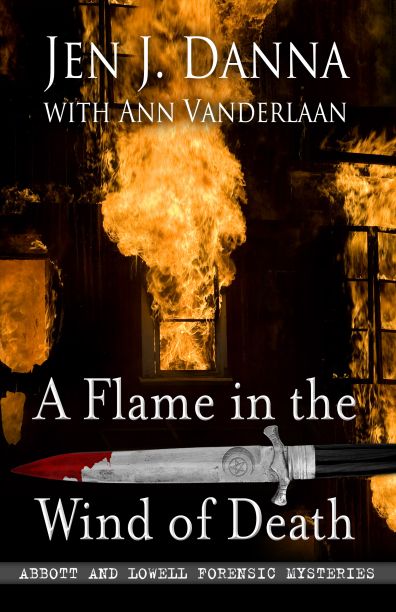Forensics 101: Fire Investigation
/
Last week we talked about some of the basics of what is involved in fire investigation and who takes part. This week we want to look more closely into what is involved in a fire investigation.
Before even setting foot inside the cooled and potentially stabilized building, a thorough investigation takes place outside the structure, taking into account an arsonist’s possible entry and exit routes, existing sightlines for any potential witnesses, and evidence external to the scene (sometimes this is the only intact evidence that escaped the fire). After entering the scene, the fire investigator is focused on two primary issues—the fire's point of origin and its cause.
To determine the point of origin, the investigator essentially needs to create a virtual reconstruction of the site as it existed before the fire based on burn and fire protection patterns. This requires analysis of the fuel involved in the fire, ventilation, the direction of spread, fire duration, and the materials involved. After reconstructing the flow and outward spread of the fire, the investigator can then follow it backwards to where it started.
What knowledge and tools must a fire investigator have at his disposal to reconstruct the devastation of a fire scene? In A FLAME IN THE WIND OF DEATH, Trooper Bree Gilson of the Massachusetts Fire Marshal’s Office uses a combination of all these strategies to determine the point of origin:
Fire dynamics: Fire investigators must be intimately aware of the driving factors in any fire—heat transfer and the buoyancy of hot combustion gases. If those gases reach a temperature of more than 500oC, they become visible as a fire plume. The larger the fire, the taller the fire plume and the more hot gases and particulate matter rise above it in the smoke plume.
Heat transfer patterns: How materials are affected by fire varies with the characteristics of that material—its melting temperature and thickness (thin materials transfer heat more rapidly than thick materials). Direct exposure to flame will also affect a material faster than radiant heat. Since the most severe thermal damage and the associated highest temperatures often indicate the point of origin, heat patterns on walls and ceilings will often reveal the location of the initial fire.
Soot layering: Soot—composed of carbon particles produced by the incomplete combustion of organic material—is a by-product of fire. These particles are contained in the hot gases and smoke that rise above the fire plume, spreading outward along the ceiling. When those hot gases encounter colder surfaces of the structure that are not yet involved in the fire, the soot particles condense in a layer on that surface. Therefore, if a part of the structure that was fully involved in the fire also shows evidence of soot, then that area of the fire started after the initial blaze.
Knowledge of materials: The behaviour of materials in a fire, i.e. the temperature at which thermal damage will affect that material, is crucial in fire investigation. For instance, copper will melt in an 1100oC fire, but steel and iron will not. Glass will melt at 760oC, but if heated to lower temperatures and then rapidly cooled by water spray, a web of microfractures called ‘crazing’ forms within the structure of the glass. Study of the materials in a fire will indicate where the fire started (heavier thermal damage will be located nearest to the seat of the fire), and also provide the direction of travel.
Interviews with firefighters: Structure conditions can change rapidly while crews extinguish the fire. Often windows are purposely broken by firefighters to ventilate the fire, so post-fire structure condition does not necessarily indicate the initial state of the structure. Interviews with firefighters will indicate conditions at the time of their arrival, as well as throughout the operation. Smoke and ventilation conditions—if doors were left open or if windows were open or broken at the time of arrival—can indicate the direction of travel of the fire prior to the fire fighters’ arrival.
Full photographic documentation: Once the scene is released and outside individuals are allowed access, the scene can no longer be considered as untainted evidence. Photographs of the state of the scene prior to release are crucial for later reference and courtroom testimony. Also, since burned structures may be unstable as water-logged walls fall or hot spots rekindle, prompt photos are crucial to document the scene as soon as possible after the fire. Since roofs often collapse during a fire, crucial evidence may be obscured by debris landing inside the structure. Sequential photos must be taken as layers of the scene are removed, revealing additional evidence.
K-9 investigators: Many fire departments are assisted by K-9 team members who are trained to isolate and locate the smell of chemical accelerants, helping to determine both the point of origin and the cause of the fire.
In cases where a K-9 has not identified an accelerant, the cause of the fire must be determined after the point of origin is located. In some cases, a fuel or heat source may be self-evident by the presence of a heated appliance such as a stove or iron. Some fires clearly lead back to wall sockets, extension cords, or small electrical devices that have failed or been misused. If an accelerant is suspected, samples can be taken from the point of origin for chemical testing.
Next week, we’re going to look at criminal fire investigations and the challenges of collecting evidence when your scene has been destroyed.
A reminder to our readers that A FLAME IN THE WIND OF DEATH will release April 18th and be available shortly thereafter. This is the third installment in the Abbott and Lowell Forensic Mysteries, following DEAD, WITHOUT A STONE TO TELL IT, and the e-novella, NO ONE SEES ME ‘TIL I FALL.

Photo credit: State Farm and DaveBleasdale




 97.7%
97.7%